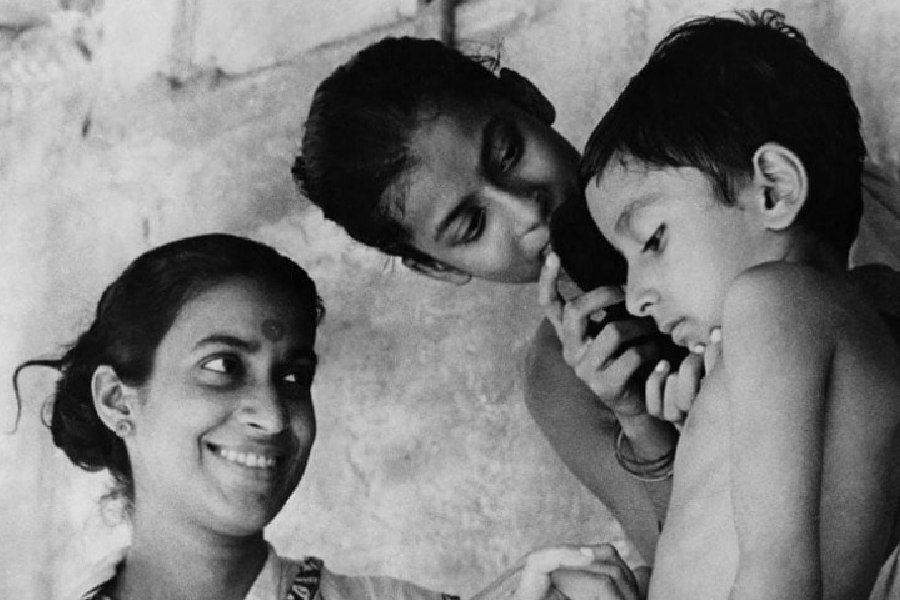Her filmography contains only one film but it is one that shook the world.
Uma Sen, née Dasgupta, who is known to legions of Pather Panchali devotees as Satyajit Ray’s Durga, passed away at a private hospital on Monday morning. She was 84 and is survived by her daughter Sreemoyee and son Sourav.
“It was an extraordinary debut. One cannot make out that she had never faced the camera before. Baba said she was instinctive and he did not have to instruct her much,” said Sandip Ray, who was too young then to remember much about the 1955 film.
Satyajit Ray, who was himself debuting as a film director, had to convince a reluctant Paltu Dasgupta to allow his daughter to act. Dasgupta was a Mohun Bagan footballer, who was Gostha Pal’s contemporary.
Despite Uma’s hauntingly lyrical performance as the older Durga (a free spirit who guides Apu to the wonders of the world like rain and train till her death jolts him out of innocence to experience), she neither acted again nor was she willing to be in the limelight. “She was reluctant to attend any of the later-day Pather Panchali get-togethers,” Sandip recalled.
The reason is reportedly a family understanding that she would do that one film and no other, according to Anirban De, who had access to the reclusive lady in her final years.
Uma stayed on her own in her Southern Avenue flat and taught at Jadavpur Vidyapith till she retired in 2000.
“She did not like being prodded about the film by strangers, so she met only limited people. There was more to her than being Ray’s Durga. She has written poems, essays and fiction,” said De.
He and Jaydeep Dey convinced her to publish her writings. The book edited by them, titled Umar Panchali, was published by Boibhashik this September. “She wrote us a poem in March as we wanted to include some fresh material.”
Uma was the youngest of four daughters and studied at Beltala Girls’ School. The family stayed in Rupchand Mukherjee Lane in Bhowanipore. “Ray, she told us, had spotted her while she was doing a stage show in school, “ De said.
Her third sister Sulekha, who incidentally was De’s teacher in school, had a hand in making their father relent and let her act.
Uma did share memories of Pather Panchali through her writings and with the two editors. “Ray used to pick her and Subir Banerjee (who played little Apu) up on the way to shoots at Boral (near Garia) where Bibhutibhushan Bandyopadhyay’s idyllic but impoverished Nischindipur was set. When they passed the Bhowanipore clothes shops, the kids would point to long-legged trousers in the shop windows and giggle that those were for Manik (Ray’s nickname) kaka,” De said.
Dasgupta refused to let Uma take any remuneration. So Ray gifted her the volumes of Rabindra Rachanabali which had been published till then. “He even got them bound.”
De could not hand her the published book as she was too ill in recent months.
The cover of Umar Panchali deserves special mention. It features three photographs of young Uma which were clicked by Ray himself.
“Ray had shot a series of Uma in sari on the roof of his Lake Temple Road home as a look test. The photographs were unearthed by Sandipda during the lockdown. We had used a few others from the series in The Pather Panchali Sketchbook, including one of her sticking her tongue out, a pose she strikes in the film too. Sandipda allowed these to be used here as this is Uma Dasgupta’s book,” said the cover designer, Pinaki De, a Ray Society member.
She was cremated at Keoratala.











